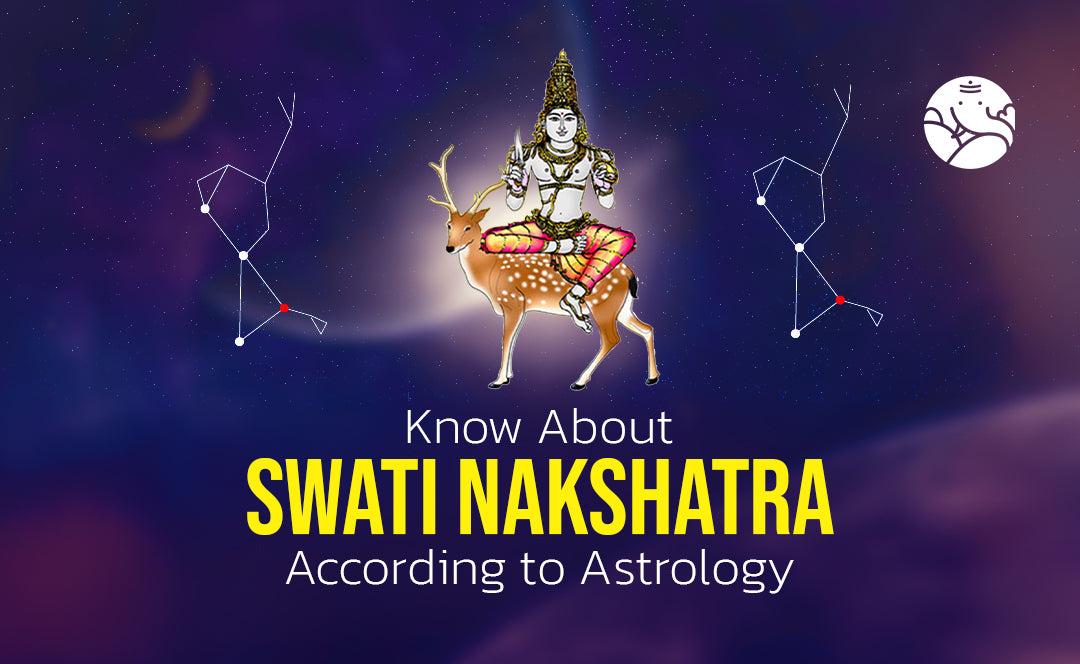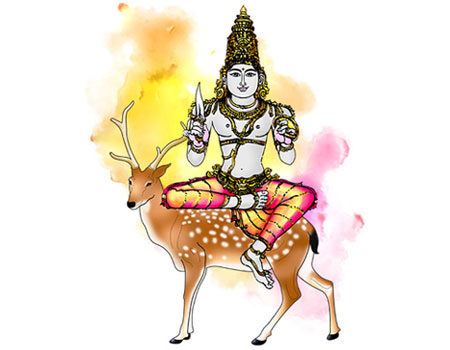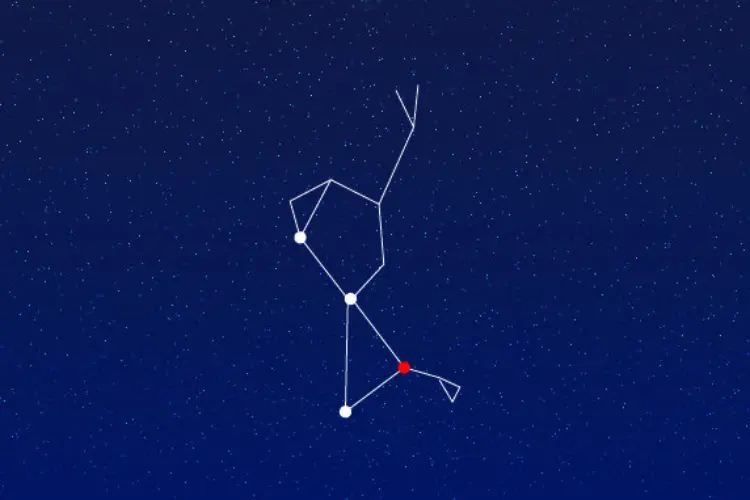One person like that
#arcturus

#SVHATI #NAKSHATRA
THE #STAR OF UNFOLDING #DESTINY
#Breathe, breathe, breathe deeply
And I was seething, breathing deeply
Spitting sentry, horned and tailed
Waiting for you.”
D. Bowie – The Width of a Circle
Dear Friends of the #Healing #Circle of the #Breath
Tonight’s Full Moon will be in the star of unfolding destiny. This is #Swati Nakshatra. It is a single star known commonly as #Arcturus.
This Star is far North of ecliptic belt and is an outsider star that is not really part of a team. We see this principle of the outsider expressed when we consider another name of this Nakshatra which is #Nishtya. Nishtya means outsider and very much expresses the energy that this star brings to us.
The energy of Svhati
awakens the thinker outside-the-box
and teaches us how to get along
with the radical forces
that blow around and rustle
the leaves in the garden of our soul.
This further brings us to the word Svhati. Svh translates as ‘the self’ and Ati relates to ‘a high amount’. So, quite literally Svhati means ‘the star of much self’. This star is often called the hyper-individual star, it is an outsider star that raises themes of individual drive and destiny.
This star is ruled by the Rahu who is the Northern Node of the Moon. Rahu is the ever-hungry head without a body that is responsible for eclipsing the sun. The energy of Rahu keeps us following the taste of our karmic involvements. The energy of Rahu does not distinguish between good or ill effect, just in the same way it is possible to follow a destructive path with great conviction and energy.
Rahu is a very hungry concentrated energy that goes into areas of addiction and obsession. If the forces of Rahu are made conscious, he breeds focus and power of determined will, that can be channelled into the unfolding of our destiny.
The Answer is Blowing in the Wind
When the full Moon is in the lunar house of Svhati, it transfers its teaching to us most generously. Under the star of Svhati we are given a blessing to gaze into the ways we are using our life-breath. Upon the psychic plane, under the auspices of Svhati – by the concentration of our life-force – we are fully given a glimpse into our unique individual and independent expression of life.
Our breath is the link to our individuality, the patterns of breathing that we have are at the essence of individual expressions and responses to life. By opening the doorways of Prana, constraints of the self are literally released into the wind.
We see that a new born baby exerts its independence from the mother’s womb by the taking of its first breath. We come to this world upon the inbreath and leave upon the outbreath, Vayu is the one who takes us through our destiny with every breath.
The Musical God of Breath
The ruling god of this star is Vayu who is the god of the wind element. Vayu is the deity who brings us the energy of Prana, which is the life giving principle in the air element. Prana is distilled from the air as awareness is made more subtle, rhythmical and tender.
The air element is also the element that transfers sound. Vayu happens to be the god of the celestial musicians who transfer the wisdom of sound through the air element.
The symbol of Svhati is a tiny sapling trembling in the breeze. Svhati Nakshatra awakens those parts of us that rebel against constraints upon our tendencies of individualism.
Those parts of us do not seem to fit into the constraining circumstances that destiny puts us into, are the special teaching that the star of Svhati brings to our awareness.
Svhati transmits the teaching of how to work within restraints and keep a dignified sense of empowerment. The power of this Star is independent of circumstances and conditions. We are talking about the deep internal power of Prana.
The Sword of Force
Svhati’s lesson is very much about how we deal with restraints. Another symbol of Svhati is the sword, in fact Svhati also means sword. The doubled-edged sword of exerting our individuality is what Svhati makes us aware of.
When we intelligently identify the things that constrain life, then we might gain insight into the opposite. This way we learn to move through our destiny. Svhati Nakshatra is the energy that seeks to move through constraints by finding a solution. We could say that Svhati welcomes the challenge of restraints.
This is the energy of forbearance, patience and strategy. Such a standing takes a rhythmical steady involvement of the breath. If we consider the opposite of this, then we can see the malfunctioning expression of Svhati.
When the energy of Svhati malfunctions, we lose the awareness of strategy and we can start going off course in the use of our power. This is the energy that is not able to hold its power, regulate itself and compromise cleverly while it considers the strategy out of its predicament. Such a stance is ultimately defeating and deflating. It either sets one up against things at one’s own expense of breath, or at the opposite pole, causes resignation in declining the strategic, regulated use of life force.
What then is the panacea for the malfunctioning of the energy of Svhati? The answer lays with the god of this star. We have seen how Vayu is the lord of wind and breath. When we work with the breath, then we bring Vayu into his full power. When Vayu is in his full power, then we have a healthy unfolding of our individual capacities without having to brandish the sword to prove ourselves.
Remember that the sword is one of the symbols of Svhati Nakshatra.
A Single Breath
All battles that we envisage are battles within our very own breath. By guarding the power of our breath, we strengthen the true power of our individual life expression.
Though it might blow like a single sapling in the wind (another symbol for Svhati), it can maintain its unique power because it does not waste its breath against the many winds that blow.
On a practical level, wind (Prana) is strengthened through working with the breath, all introverting and focussed activities strengthen the Prana. Moving slowly and steadily with awareness of every breath is the surest way to the power of Prana.
3 Likes

#Swathi is the 15th #nakshatra mentioned in the astronomical texts of ancient India. The single #star #Arcturus (Alpha-Bootis) in the #Botis #constellation represents this nakshatra.
The symbol of nakshatra is a young plant ready to face the test of times. It can bend, be flexible, and restless to grow tall and look into the world quickly. The ruling deity #Vayu offers creativity, artistic abilities, and freedom-loving nature on the natives.
#Swati is also said to be the first pure-drop of rain that falls on the Earth and can turn into a beautiful pearl when it falls on an oyster.
Astrological Range: 186°40 to 200°00′ #Libra
Nakshatra Number: 15
Gender: F#emale
Symbol: Young sprout quivering in the wind, Sword, Coral, Sapphire
Presiding Deity: Vayu – God of Wind
Controlling/Ruling Planet: Rahu
Ruling Deity of Ruling Planet: Durga
Shakti: Pradhvamsa Shakti, Scatter like the wind
Caste: Vaishya
Nature: The movable or ephemeral (Chara)
Gana: Deva Gana (god-like)
Body Varāhamihira: Teeth
Body Parashara: Stomach
Rashi/Zodiac: Libra sign
Marriage: Auspicious
Translation: The priest, the sword
Beejakashra for 4 pada’s: Ru, Re, Ro, Ta
Lucky letters: R & L
Lucky Stone: Gomedhaka
Lucky Color: Black
Lucky or Favourable Numbers: 4
Common Name of Associated Tree: Queen’s Flower, Arjuna Tree (Matti)
Botanical Name of Associated Tree: Lagerstroemia speciosa
Astronomical Name: Arcturus
Dosha: #Kapha
Guna: #Tamasic
Element: #Fire
Bird Name: #Honey-Bee
Yoni/Animal Symbol: #Male #Buffalo
Career: Financial and legal domains, gold business, acting, textile, traveling, mechanical engineering, service professions, independent entrepreneurs, yoga instructors, lawyers, judges, or any job requiring flexibility
https://pujanpujari.com/nakshatra/swathi/
3 Likes
Ruling Planet: North Node ( #Rahu)
Associated Deity: #Vayu, the #wind #god
Associated Stars: #Arcturus
Corresponding Position in the Western Zodiac: 0°26′-13°46′ Scorpio
Quality or Modality: #Movable ( #Chara)
Associated Element: #Fire
Personality Traits: Open-minded, balanced, social, indecisive, forward-thinking, good planners
https://a-z-animals.com/blog/the-nakshatras-and-their-meaning-in-vedic-astrology/

#Swati #Nakshatra According to #Astrology
The people who are brought into the world under Swati nakshatra are known to be the most flawless people. Here, they are the fifteenth nakshatra in the heavenly body of the #Zodiac belt. The word Swati implies blade which for the most part means their sharp insight and their abilities. They generally have an extremely sure methodology in their life and does everything with extraordinary certainty and faith in their heart. They are having high confidence and deep trust in themselves which assists them with accomplishing numerous troublesome things in their day-to-day existence. They are amazing at managing what is going on with extraordinary straightforwardness and sharpness.
Swati Nakshatra
They are awesome at conveying and offering their viewpoints and considerations unreservedly and strongly. They are extremely certain about their temperament having a beguiling character by which they can undoubtedly dazzle anybody. They are brilliant in following social behaviors and exceptionally famous in their group of friends.
Swati Natchathiram
They generally have an exceptionally sure methodology in their life and does everything with extraordinary certainty and confidence in their heart. They are having high confidence and compelling trust in themselves which assists them with accomplishing numerous troublesome things in their day-to-day existence. They are magnificent in managing what is happening with extraordinary effortlessness and sharpness.
Lord of Swati Nakshatra
Swati nakshatra ruler is known to be #Vayu and the Lord planet of this Nakshatra is known to be #Rahu. Vayu is known to be the #God of #air and wind which is basically alluded to as the existing force that can without much of a stretch blow away pollutions and impediments like a breeze that is constrained by him. This nakshatra in western soothsaying is compared to #Arcturus #star.
Swati Nakshatra Famous Personalities
Numerous prestigious VIPs were brought into the world under this nakshatra and became famous and procured a lot of names and distinctions in their life. Some Swati nakshatra superstars are Charlie Chaplin, Sigmund Freud, Mahatma Gandhi, Whoopi Goldberg, Hillary Clinton, Bill Gates, and Kevin Kline.
Swati Nakshatra Pada 1
The first pada position of this nakshatra is in the Sagittarius Navamsha which is represented by the planet Jupiter. Here, it predominantly focuses on conquering fretfulness and curious nature. The natives here are extremely inquisitive about all that and particularly about others' lives which in some cases influences them adversely. They are extremely fretful in nature because of which they generally experience the ill effects of tension problems. The natives love voyaging and making audacious involvement in their life.
Swati Nakshatra Pada 2
This second pada position of this nakshatra is in the Capricorn Navamsha that is represented by the planet Saturn. The natives are lot leaned in acquiring material riches and leaned to lead a lavish way of life brimming with solace and extravagances. The natives are exceptionally grounded and practical people who are having a steady type of revenue in their life and are quiet and cool in nature.
Swati Nakshatra Pada 3
The third pada position of this nakshatra is falling under Aquarius Navamsha which is represented by the planet Saturn. This position principally focuses on imagination and acquiring information and accomplishing shared objectives through solidarity while working in a group. People brought into the world in this pada are extremely imaginative and learned individual who involves their innovative abilities in accomplishing more noteworthy levels in their profession. They are extremely unconstrained people who remain high in their spirits and certainty to make extraordinary progress in their expert life.
Swati Nakshatra Pada 4
The fourth pada position of this nakshatra is in the Pieces Navamsha which is represented by the planet Jupiter. This position primarily centers around adaptability and straightforwardness. The people who are brought into the world in this position are having extraordinary capacities to explore through the circumstances by being adaptable and movable for their more prominent great. They will deal with tough spots with their knowledge to come out more astute and better.
Swati Nakshatra Zodiac Sign
The Zodiac indication of this nakshatra is Libra. This is known to be an extremely heavenly and faithful nakshatra. Natives who are brought into the world in this nakshatra are extremely unadulterated and certified individuals. They are extremely lucky and have the gifts of seniors because of their agreeableness and deeds. Some of the time, they could battle with their pleasing nature and self-importance demeanor yet they are extremely rational people.
1 Comments

#Swati (The #priest, the #sword) (186°40 to 200°00′ Libra)
Swati nakshatra is represented in the night sky by the single star of #Arcturus (Alpha-Bootis). This is the main star in the #constellation of #Bottis. In the #astrology chart, Swati resides entirely in the sign #Libra.
Swati translates as " #Independent one." The symbol of this nakshatra is a young #plant #blowing in the #wind, which represents flexibility and agility as well as restlessness. The ruling deity #Vayu, the God of wind, bestows a strong, yet gentle nature to this star. #Rahu is the planetary ruler and signifies hidden potential.
Those born under Swati nakshatra are humble and often need to be informed of their own potential for greatness. They have an openness to learn new information, but must also avoid indecision and procrastination. Those born under Swati are diplomatic and they use charm to navigate the world. These people have strong beliefs in social etiquette and try to fit into society. Swati can bring success later in life. The essence of Swati is balance and people born under this star take their time to act.
Sacred Energy Vortex
#Siththukkadu #Sri #Prsanna #Kundalambhigai #Samedha Sri #Thaanthreeswarar #Siva #Temple Sri #Sundararaja #Perumal Temple
The sacred site with most significance for Swati star is located at Sihthukkadu near Poondamalli in Tamil Nadu, India. This site connects the sacred shrines of Sri Thaanthreeswarar Siva Temple and Sri Sundararaja Perumal Temple. It is important for those born under Swati star to visit the sacred energy vortexes of Lord Shiva and Lord Maha #Vishnu at Siththukkaadu.
Swati nakshatra is a saintly word that consists of energy representing the oneness of Siva and Vishnu. Worshipping at both these temples on Swati star day, Monday or Dwadhasi (12th waxing moon phase) would bestow grace and significant benefic effects for the solidarity of the Saivites and Vaishnavites.
Sri Prasanna Kundhala ambhigai Samedha Sri Thaandhreeswara Siva Moorthy is also a sacred shrine bestowing grace of yoga jothi, an energy that personify in the shape of sound and light. Mixing both light and sound is known as Kundala Yogam and through this mixture, Kundala Jothi comes forth. On the Swati star day, at Siththukkaadu Siva temple aunqiue Kundala Jothi shines brightly. A small earthen lamp lit on Swati star day at this sacred shrine would bring Kundala Jothi energy for the whole world.
Kubera Moorthy worshipped at the sacred shrine situated at Siththukkaadu, the place of manifestation of abundance of wealth. He performed penance for thousands of years by standing on the toe of his right foot and worshiping with Nagalinga flowers to Kundhal ambhigai Samedha Sri Thaandhreeswarar. After performing abhishekham with the essence of Emblic Myrobalan fruit, he worshipped Lord Mahaa Vishnu in Sri Sundararaja Perumal Temple. Kubera Moorthy was granted the blessing to provide assistance in the form of immense wealth to those worshipping with great devotion at this sacred shrine.
Swati nakshatra contains the energy of absorbing, spreading and fulfilling the divine energy on the divine objects such as rudraksha beads, bells, and sacred thread. Siththukkaadu is one of the sacred shrines where this energy can be easily accessed. In addition to those born under Swati star, visiting this sacred temple can benefit those who are married without the blessings of their parents or family members as well as doctors and people in the medical professions.
Swati nakshatranatives, your #incense is made with the #herb #Jarul as prescribed by the Vedas.
Burning one of these pillars is like performing a mini fire ritual for that particular star formation. For your specific Birthstar, you will be able to connect inwardly to your planet of energetic origin and gain support with the positive aspects that are you.
Burning the other Nakshatra pillars on that specific Nakshatra day will tune you in with the favorable activities with that star’s energy for the day. It is recommended to at least burn your own personal Nakshatra pillar daily to stay connected to your essence. It is advantageous to burn the days Nakshatra pillar as well.
https://www.astroved.com/astropedia/en/nakshatra/swati-nakshatra

#Swati #Nakshatra - Swati is the fifteenth Nakshatra in #Vedic #astrology ranging from 6°40' to 20° Tula.
Symbol - The symbol of this Nakshatra is a #shoot #of #plant, #coral.
Astronomical Name - The astrological name of this Nakshatra is #Arcturus.
Deity of Nakshatra - #Vayu, the #Wind #god is the deity of Swati Nakshatra.
Ruling Planet - Swati Nakshatra is ruled by #Rahu (north lunar node).
Others - The word Swati means "the #sword" and reflects a strong desire for #independence. Swati Nakshatra people have an ability to "bend with the wind" in order to survive the forces of change which they may encounter. Vayu, the deity is the purifier and cleanser that pervades in the universe and sustains life.
https://www.drikpanchang.com/tutorials/nakshatra/swati-nakshatra.html
One person like that
https://youtube.com/watch?v=9-i3r3PdPFk
#greys, #reptilians , #insectoids, #nordic , #sirus-b, #Arcturus, tall white #zetas
#BarbaraLamb, MS, MFT, CHP - Part 2 “ #ET- #Human #Hybrids”
#hypnotherapy

Natives born in #Swati #Nakshatra are intellectual, have a sharp intellect, are well learned, possess vast amounts of knowledge and are of a curious nature.
They are communicative, possess speaking talents, are humorous, diplomatic and mildly reserved, strong, have networking skills, persuasive talent, win over others, natural diplomats and deal makers, respectful of people of all kinds, unshaped by other people’s authority, and against confinement.
Swati Nakshatra in astrology is one of the Tiryaka Mukhi Nakshatras (or the #Nakshatras, which have their mouths curved). In these Nakshatras, things related to roads, dams, the expansion of metals, chariots, boats, etc., can be auspiciously begun and performed.
Symbol: A #Coral
The symbol for Swati Nakshatra is coral. Coral is a gemstone of Mars. Mars is a masculine planet indicating the development of male genitals.
Deity: The #Vayu
The deity of Swati Nakshatra is Vayu, or the wind. Vayu is strong and beautiful. He is like the flames of fire (due to the crashing of clouds). He acts upon the words of his parents. He is the main cause of rains. He speeds up the streams of water. He gives us strong and beautiful sons. He is the God of war, so he is both destructive and benevolent.
Range 186⁰ 40” – 200⁰
Rashi Taurus (Tula)
#Yogathara #Arcturus or Alpha Bootis
Position The brightest star of Swati
Apparent Magnitude -0.04
Latitude +30⁰ 44” 23’
Longitude 180⁰ 22” 36’
Right ascension 1h 15m 26s
Declination +19⁰ 12” 30’
Characteristics of Swati Nakshatra in Astrology
The animal of Swati Nakshatra is a male #buffalo.
They are part of a Bovidae family, which includes bison, caribou, antelope and water buffalo.
They have thick, large horns, which join in the middle of their head.
Like a bull, the natives of Swati Nakshatra are extremely powerful and can weigh a ton.
They love being in the water, which is especially true for water buffalo found in India.
Buffalo is also known as the ride of Lord Yama. Just like other families of Bovidae, they eat only grass and bushes, and are mainly used in India to push carts and do farming activities.
Swati natives will become either vegan or vegetarians at one point in life.
Due to the nature of water buffalo, they love taking long showers and to be in the bathtub.
Swati natives like to live near an ocean or a river because they need a body of water they can step in, like a water buffalo.
The symbolism of Swati Nakshatra is the blade of grass being swayed by the wind or a sword.
The symbolism speaks the poetry of 1000 words.
Swati Nakshatra natives are extremely independent. They want to travel, do things independently, and know how the world works.
The blade of grass is the Swati native who moves in the direction of the wind.
They love to travel, want to know everybody, and like the wind, they want to take one piece of information and spread it in all directions.
They cannot stick to one particular thought; they must move, and ride the way of the current time.
The Swati natives have a bit of ADD (Attention Deficit Disorder) in nature, which is why it makes them excellent entrepreneurs.
An entrepreneur is to be at the right place at the right time and execute the idea to get the maximum result, after which they move to the next venture and do the same.
For example, the wind blowing over the United States will flow over India and Russia; and by this it can be seen that the Swati natives are worldly people.
They want to experience the world, travel the world and are obsessed with knowing what is happening in the world.
The wind touches all economies, people, animals and mountains.
The information that is in a single molecule of oxygen is the same molecule inside a Swati native.
The wind is oxygen, oxygen is the vehicle of prana (breath) and prana is what gives us the life force.
Swati natives are profoundly known as yogis or yoga experts.
They can easily master breathing yoga techniques like Anulom vilom pranayama, Kapalbhaati, Kriya, etc.
As the wind is felt about 3 feet from the ground till all the way to mountain peaks, Swati natives are obsessed with reaching the highest ground, which makes them interested in space, rockets, airplanes.
Wind can also cause issues with the lungs due to too much Kapha Dosha, which a person can fall victim to if Swati is influenced by malefics.
The other symbolism of this Nakshatra is the blade or sword.
The caste of Swati Nakshatra is the butcher.
Swati natives naturally have a grasp of dealing with the blade, like fencing, sword fighting, cutting meat or having an interest in collecting sharp blades, which also translate into the nature of Swati natives.
They will cut you in conversation when angry and frustrated.
They can butcher a perfectly made business plan if they are not careful.
The deity of this Nakshatra is Vayu, the wind God and king of celestial musicians.
Vayu is a life-giving breath that nourishes us with the life force or prana.
He is the father of Bhima amongst the Pandavas and the spiritual father of Hanuman.
Many qualities of Vayu can be seen through Hanuman.
When Hanuman was young, he thought Sun was a big fruit and jumped into the sky to eat it.
The Sun God felt intimidated by the little child coming up to him, and asked Indra to bring the child down with his weapon.
Hanuman was struck on his jaw by Indra’s weapon, known as Vajra, the thunderbolt.
Impressed by the child’s resistance, the devas (Gods) blessed Hanuman with various powers.
The child Hanuman used his powers to play pranks upon others.
He ended up being cursed by rishis that he may forget his gifts and powers. When he apologized for his mistake, rishis said his powers would come back to him if reminded by someone else.
Later, when Hanuman was searching for Sita, Lord Rama’s wife, Hanuman felt dejected knowing that the only place left to search for Sita was Lanka and that he had to jump across the ocean to reach Lanka.
Having lost his powers, he was reminded of it by Jambavan, the bear headed being, about his youthful exploits and the subsequent curse.
Hanuman regained confidence and ended up playing out multiple roles of being a messenger to Sita, being a diplomat to Vibhishana, and a soldier against Ravan.
Hanuman is also supposed to have lifted the entire mountain named Dronagiri and brought it to the battlefield of Lanka for Lakshman, who was poisoned by a weapon.
Hanuman’s story can play out through Swati Nakshatra.
From the mythology, it can be seen that, just like the child Hanuman, Swati natives want to achieve the impossible.
They want to reach the top, they have no fear of where they are going, whom they are going to meet or what they are climbing.
Once they see their object of fasciation, they go for it, and this is why Swati natives love climbing mountains and hiking to the highest trail.
They also love collecting shoes, buying shoes and if a shoe breaks for them, major karma gets released or plays out in their life.
Shoes are connected with Swati Nakshatra because the yogatara star of Swati, which is Arcturus, it is at the leg region of the virgin lady of the Virgo zodiac sign.
The yogatara of Swati is at the zero degrees of Libra.
This is why, Chitra Nakshatra and Swati Nakshatra natives in the Libra zodiac sign, will share the same traits.
Swati natives love playing musical air instruments like flute and piano.
Swati natives always need a mentor or a manager who helps them in their journey to become successful as they keep forgetting they have the ability to conquer the world.
They should have a vision board to remind themselves what they can and must achieve.
The most obvious power of Hanuman is his body, strength, and flying ability.
If Chitra or Swati natives, between 0–7 degrees of Libra, are observed, it can be seen that they have a great obsession with flying, bodybuilding, and sculpting their bodies.
Such people also become obsessed with Superman.
But when Swati natives are trying to reach the top of their career, they will face a big fight with an enemy who will try to bring them down at all cost, just like how Indra tried to use his weapon on young Hanuman.
Attributes of Swati Nakshatra in Astrology
Spread from 6’40” to 20’00” Libra (Tula).
Restlessness disposition or physical restlessness, inability to stay still at any place, fidgetiness and noise come from the attributes of its deity, the wind.
The winds (Marut) are the Lords of the North-West. There are 49 of them under ‘Pavana’. Of all Gods, he is the strongest and most obstinate.
These are derived from the knowledge, and the physical internal adjustments of the 5 Winds – Pan, Apan, Vyan, Udan and Saman.
Also from this comes the storms and the whirlwind, the concrete disturbance of the atmosphere.
A native born under this star is good at buying and selling; his wealth and property comes and goes quite easily. He is an independent sort of man, always striving for more independence.
Asceticism is yet another attribute of this star.
The wind is the great scavenger; it sweats the dross and purifies.
Description of Swati Nakshatra in Vedic Astrology Treatise
According to Hora Sara: The native born in Swati Nakshatra will be mild, happy, compassionate, affable, virtuous, incur debts, live in foreign places, be hatefully disposed to his relatives, be simple in dress, and will have a few sons.
According to Jataka Parijata: If a native is born under the star Swati, he will try to please Gods and Brahmins, devote himself to enjoyments, and will have much wealth but little intelligence.
According to Sage Narada: The native born in Swati Nakshatra will be righteous, eloquent, valorous, an expert in trading activities, lustful, a celebrity of great order (or one who has much knowledge), self-restrained and educated.
According to Brihat Samhita: The star Swati makes one self-controlled, clever in trade, kind-hearted, virtuous, and gives a pleasant speech.
Swati Nakshatra Pada Description
Swati Nakshatra 1st Pada:
1st Pada of Swati Nakshatra is ruled by Sagittarius Navamsa (Governed by Jupiter).
Those born in the first pada of Swati Nakshatra are brave, knowledgeable, speak little, good speakers, handsome, capable of doing any job, endowed with a sophisticated body, strong, critical in all undertakings, and win people’s hearts.
Those born in the first pada of Swati Nakshatra are calm, poised, and of an open mind, have great speaking talents, are educated, scholarly, open to new ideas, and may become writers, publishers, teachers, and debaters.
Those born in the first pada of Swati Nakshatra have a desire for travel, interest in foreign concepts, sciences, the current state of society and philanthropy.
Those born in the first pada of Swati Nakshatra are moral, use law, negotiate legal deals and contracts, have business ethics, work deals through speaking, and are honest deal makers.
Swati Nakshatra 2nd Pada:
2nd Pada of Swati Nakshatra is ruled by Capricorn Navamsa (Governed by Saturn).
Those born in the second pada of Swati Nakshatra undertake forbidden jobs, are untruthful, handsome, irreligious, extremely stingy but endowed with a good wife and children.
Those born in the second pada of Swati Nakshatra are methodical in nature, disciplined, organized, structured, and involved in solid business dealings.
Those born in the second pada of Swati Nakshatra are strict and to the point, putting it all on the table, need recognition and status in their business dealings, ensuring gains, dealing with the government, wanting authority in dealings, and being in control of others.
Those born in the second pada of Swati Nakshatra are selfish, satisfying own needs, interested in personal comforts, seeking attention in creative undertakings, may be restricted from opportunities in life, especially early on, and may sometimes follow un-ethical business practices to earn.
Swati Nakshatra 3rd Pada:
3rd Pada of Swati Nakshatra is ruled by Aquarius Navamsa (Governed by Saturn).
Those born in the third pada of Swati Nakshatra increase their enemy circle, expend money and time irresponsibly, and are always overthinking.
Those born in the third pada of Swati Nakshatra are gentle, intellectual, technical, skilled, utilizing the latest and greatest technology and information, and have business dealing in science.
Those born in the third pada of Swati Nakshatra are involved in the latest technology dealings, dealing in computers, cutting edge robotics, the internet, in business to change society. They are involved in undertakings and products that help society, business dealings to assist the underprivileged, and making gains through welfare reform.
Those born in the third pada of Swati Nakshatra are making partnerships and forming groups to achieve goals, creating companies to help society, and are involved in businesses that suit society’s needs.
Swati Nakshatra 4th Pada:
4th Pada of Swati Nakshatra is ruled by Pisces Navamsa (Governed by Jupiter).
Those born in the fourth pada of Swati Nakshatra are prominent persons. The natives are angry, respectful of teachers, and wealthy. They are happy with their family and children. They are wise and bright and always interested in doing good works.
Those born in the fourth pada of Swati Nakshatra are intellectual, emotional, spiritual, educated, social, flexible, adaptable, creative, and want to be creative with business.
Those born in the fourth pada of Swati Nakshatra work with art, make an impact on others through creativity and hard work, and are service-oriented.
Those born in the fourth pada of Swati Nakshatra sacrificial, involved in partnerships with creative people, and their business or marriage partners may be from foreign lands.
Sun’s Ingress (Oct 23rd – Nov 5th) for Swati Nakshatra
The Sun enters Swati Nakshatra on Oct 23rd and remains there till Nov 5th. If you are born during this period, your Sun is in Swati Nakshatra.
During this period, Deepavali is celebrated. Deepavali is celebrated for 5 days.
In many regions, Deepavali starts on Dhanathrayodhashi. This seems to be appropriate because Dhanathrayodhashi comes on Hasta Nakshatra and the next 5 days come under Hasta Panchak. Therefore, this period is an Hasta Panchak of Moon between an Hasta Panchak of the Sun.
Hasta Panchak of the Moon in Hasta Nakshatra of the Sun (Hastha Panchak of the Sun) was celebrated during Navaratri, and Hasta Panchak of Moon during Swati Nakshatra is celebrated during Deepavali.
Tree of Swati: Arjun
The tree of Swati Nakshatra is Arjun. The flowers of Arjuna are offered to Lord Vishnu on Anantha Padmanabha Vrata and Lord Ganesh on Sankashta Chathurthi Vrata.
Its bark produces a brown dye. Its leaves are fed to silkworms.
This tree shall not be planted within the limits of the house.
Its gum is used as an adhesive.
Arjuna is an antioxidant; it reduces cholesterol and blood pressure.
It is useful in bleeding disorders and heals fractures and wounds quickly.
If an anthill is found to the north of the Arjuna tree, there will be an underground water source at a distance of 4.5 feet to the west of the anthill.
The water source will be approximately 21 feet below the ground. 9 feet below the ground will be loose black earth, followed by yellowish-white soil and abundant water.
Applications of Arjuna
Arjuna bark’s decoction is used to treat burning sensation while passing urine.
Bark powder mixed with milk is effective in sexual apathy.
The extract is also used to treat emotional turbulence.
The gum is effective as a purgative.
Extracts of tender leaves of Arjuna is effective in relieving ear pain.
An extract or paste of leaves applied on an abscess or wound accelerates healing.
Astronomical Information of Swati Nakshatra
Almost all astronomers agree that the Yogathara of Swati Nakshatra is Arcturus Alpha Bootis.
Interestingly this star does not come in the range of Swati.
This is because no star in Swati has an ecliptic latitude closer to 6.5.
Even latitudes of Arcturus are +30.6. Arcturus or Alpha Bootis is the 4th brightest star in the night sky.
Arcturus is a red giant. It is 110 times brighter than the Sun.
It can be observed in the daytime with a telescope. It is a yellow-orange star and considered a very cool star.
Arcturus moves at a rate of 122 km/s. It cuts perpendicularly through the galactic disk.
It moves with a group of 52 other such stars, known as the Arcturus stream.
Considering this property of Arcturus, the deity of Swati, i.e. Vayu, seems appropriate.

#Swati #Nakshatra in #Astrology
This nakshatra completely belongs to the sign of Libra. Swati Nakshatra’s symbol is the blade of a grass swaying in the wind, and it’s about the air and wind because the deity is #Vayu – the air god. The Swati natives manage all essential correspondence very well. With Swati Nakshatra, there is always consistency and the ability to discuss effectively.
Because it deals with Vayu – the wind god, it deals with breath. He is also called Prana Devata – the life-giving breath or the life force. He is also called the king of musicians. Pranayama – breathwork has a lot of relevance to this nakshatra.
Symbolically, the way a blade of grass can sway in the wind, people under this nakshatra can sway along with any communication going on and with any kind of group. They are very adaptable and adjust to a situation.
#Goddess #Saraswati is associated with Swati Nakshatra. She is the goddess of literature, music, talent dealing with writing, arts, or anything related to learning. Many Swati natives are musically evolved and know how to play string instruments.
The #star that is pertinent to Swati nakshatra is #Arcturus, which is eminent for flourishing and achievement, particularly in expressive arts and business. Arcturus is a brilliant yellow star situated in the limit northward of the zodiac. That is the reason Swati Nakshatra is likewise called the outsider one. The idea of this nakshatra is known for its self-developing ability.
This nakshatra is governed by #Rahu. That can make these natives sharp and penetrating with their actions and words. They endeavour to be free and maverick. However, they are extremely aspiring and anxious to learn.
In the zodiac wheel, Swati Nakshatra is connected to the Libra sign.
https://www.mypandit.com/astrology/nakshatras-constellations/swati
One person like that


 Grass
Swati is symbolized by a
Grass
Swati is symbolized by a 